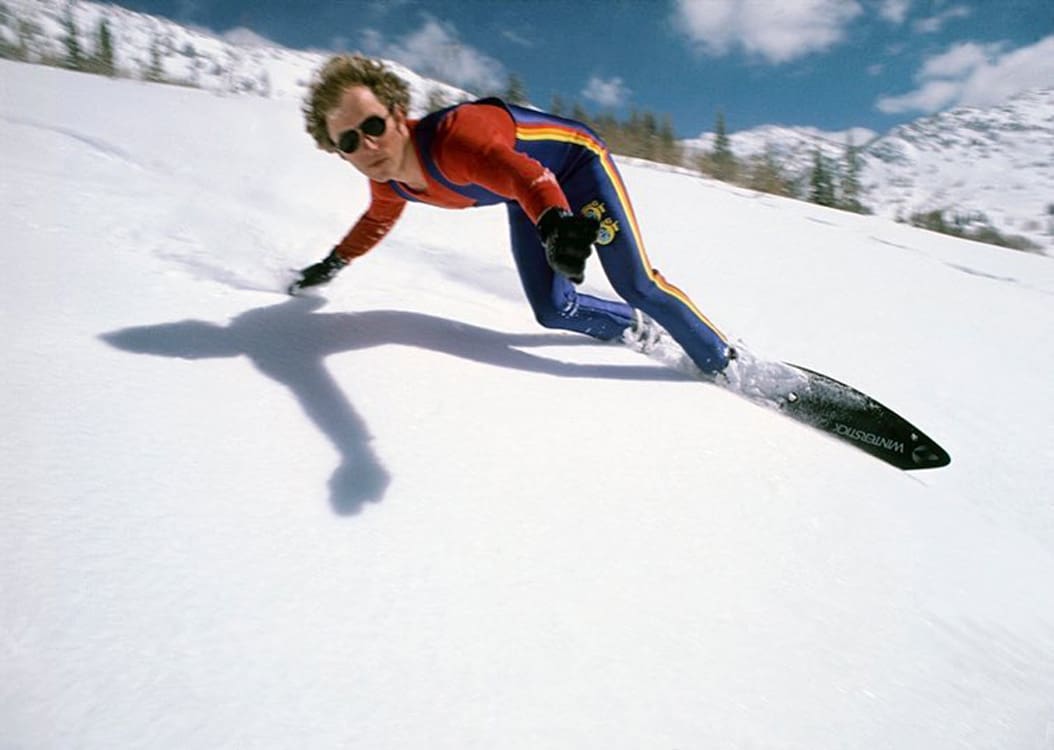Arts & Entertainment
Discover Utah’s impact on snowboarding: From Snurfer beginnings to Burton’s freestyle revolution

Photo: Alf Engen Ski Museum // Evolution of Snowboards Exhibit
PARK CITY, Utah — From the early days of the snurfer and Skate Banana to Sims and Burton, the Alf Engen Ski Museum highlights Utah’s influence in the evolution of snowboarding, showcasing how snowboards, bindings, and boots have transformed over the decades.
“The snurfer is where it all began,” said Maddie Nunez, museum manager. The snurfer, a wooden board with a rope handle, set the stage for modern snowboarding. Developed in Michigan, it quickly found a place in Utah’s powder, where riders could maneuver without metal edges, a crucial advantage over icier East Coast slopes.

Utah played a significant role in the early days of snowboarding as innovators like Dimitrije Milovich, Jake Burton Carpenter, and Tom Sims began pioneering designs that would reshape winter sports. Milovich’s Utah-based company, Winterstick, was one of the first to produce snowboards designed specifically for powder, marking a turning point in snowboard design with the introduction of metal edges. “Winterstick really marks the beginning of snowboarding as we know it today, with proper edges for better control,” Nunez said.

While initially met with resistance, snowboarding quickly grew into a countercultural movement, inspired by skateboarding and surfing. Early riders saw themselves as distinct from skiers, embracing a “new attitude” and an “in-your-face” approach that often clashed with traditional ski culture. In 1985, only 7% of U.S. ski areas permitted snowboarding, highlighting the generational divide that the sport represented. “The ban came about after a skier injury lawsuit on the East Coast,” Nunez said. “At the time, resorts restricted anything but traditional skiing, including telemark and snowboarding.” However, as snowboarding gained popularity, ski resorts realized the potential of attracting a younger demographic and began investing in snowboard schools and terrain parks.

Nunez highlighted how brands like Sims and Burton later shaped the sport, each taking a different approach. “Initially, both focused on racing, mirroring ski industry standards, but Burton soon pivoted toward freestyle, aligning with a counterculture movement that opposed skiing restrictions,” Nunez said.

By the mid-1990s, snowboard bans started to lift as resorts recognized the business impact of catering to snowboarders. The sport achieved widespread acceptance when it debuted at the 1998 Winter Olympics in Nagano, solidifying its place in the winter sports world.
The museum’s exhibits also include examples of ski gear evolution across Alpine, cross-country, and freestyle skiing. Although ski equipment has changed significantly over time, ski jumping skis have remained largely the same. “Ski jumping skis have stayed pretty constant in a very, very tall ski, where all the other ones have changed pretty drastically,” Nunez said.
With a comprehensive look at Utah’s role in these developments, the museum underscores the state’s lasting impact on the skiing and snowboarding world. Learn more about the Evolution of Snowboarding and the Alf Engen Ski Museum here.




















